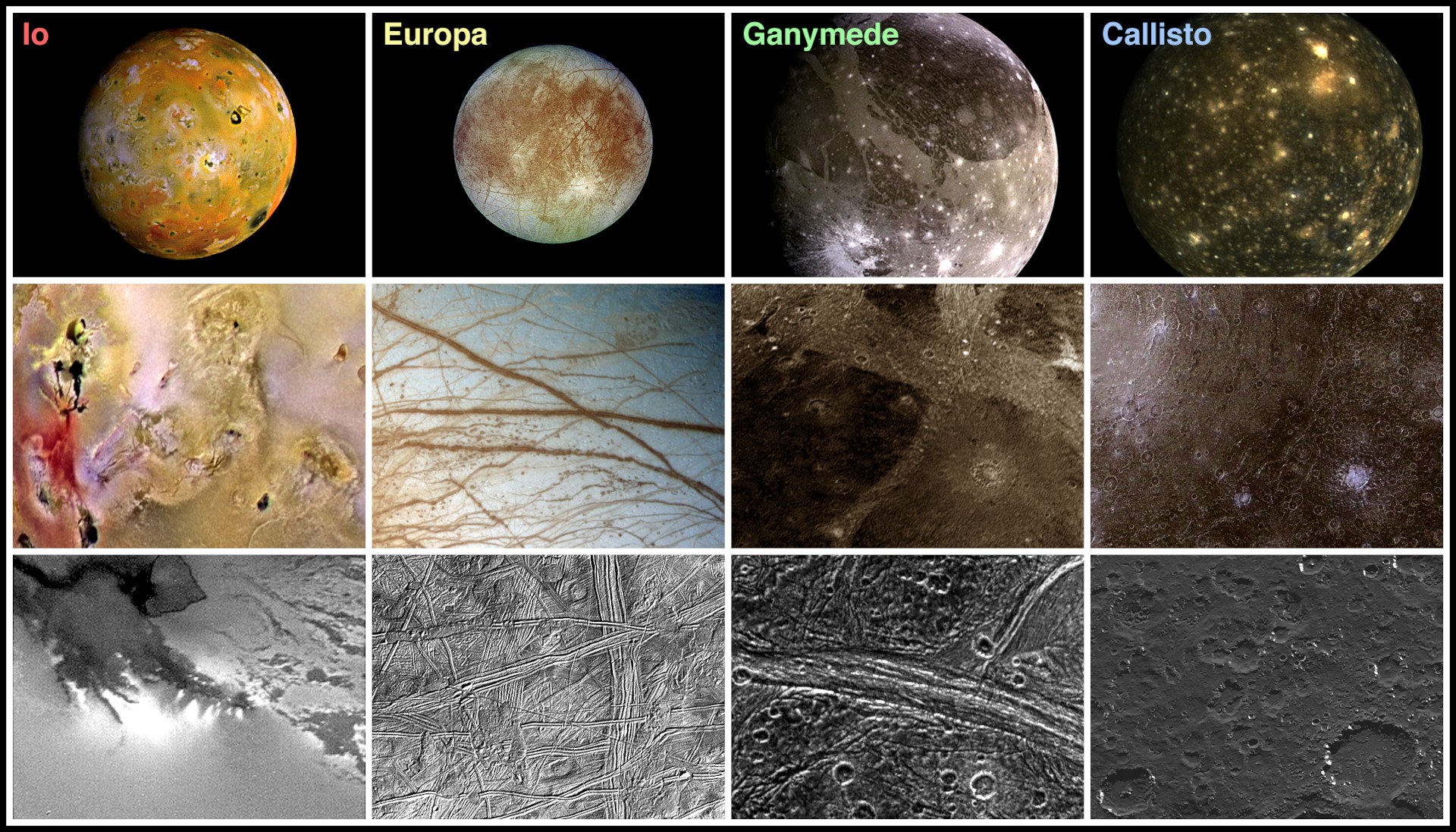Different moon surfaces
Different moon surfaces
NASA's Galileo spacecraft transmitted the best images yet of the Galilean moons to Earth. The top row shows their correct relative sizes. One can see how the moons were shaped by either tectonic or, in the case of Io, volcanic processes. In the middle row, the image resolutions are approximately one kilometre per pixel. Here, one can see volcanic lava fields (black spots) on Io. The cracks in Europa's ice and the bright regions on Ganymede have been cut into the ice crusts by tidal forces, and the large impact basin on Callisto shows ring-shaped structures. The lower row are views with details of a few tens of metres in extent. On Io, we can now see individual vents from which volcanic gases escape, individual ice ridges typical of Europa, as well as rugged, stretched and furrowed terrain on Ganymede and heavily eroded craters on Callisto.
Credit:
NASA / JPL

